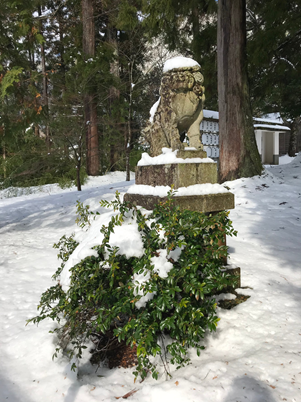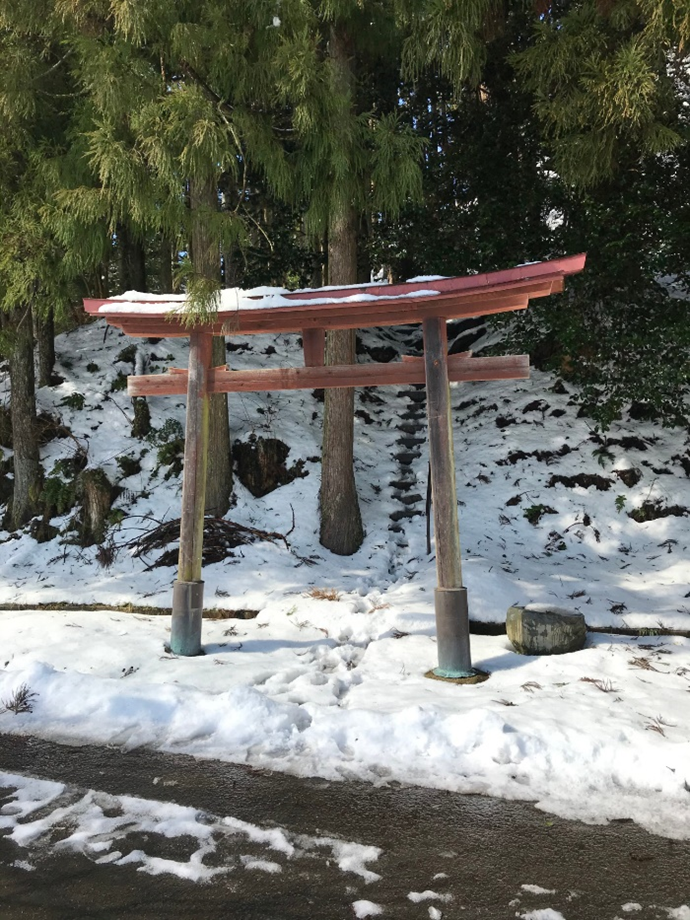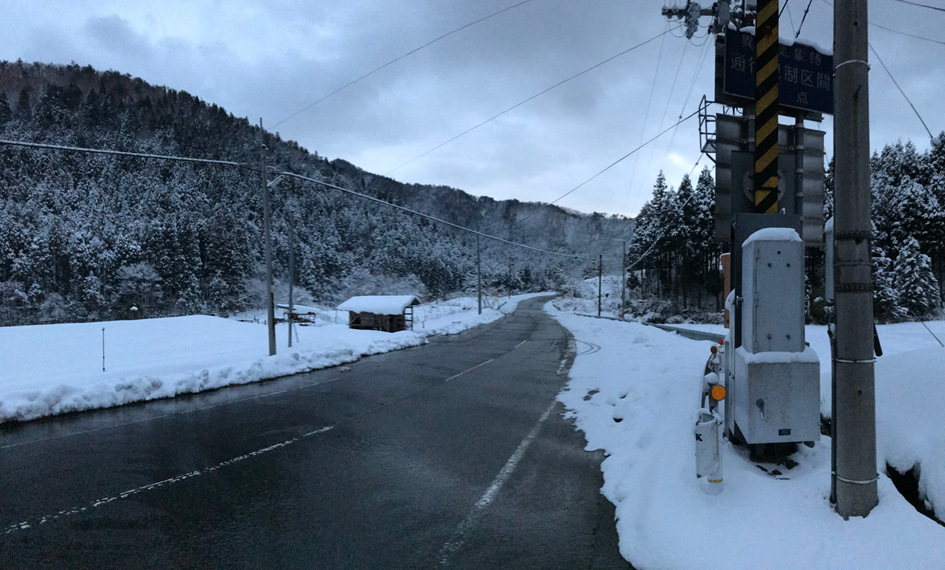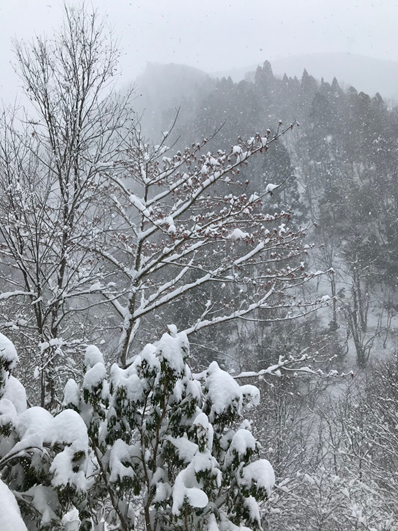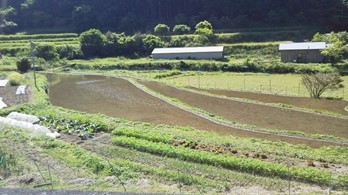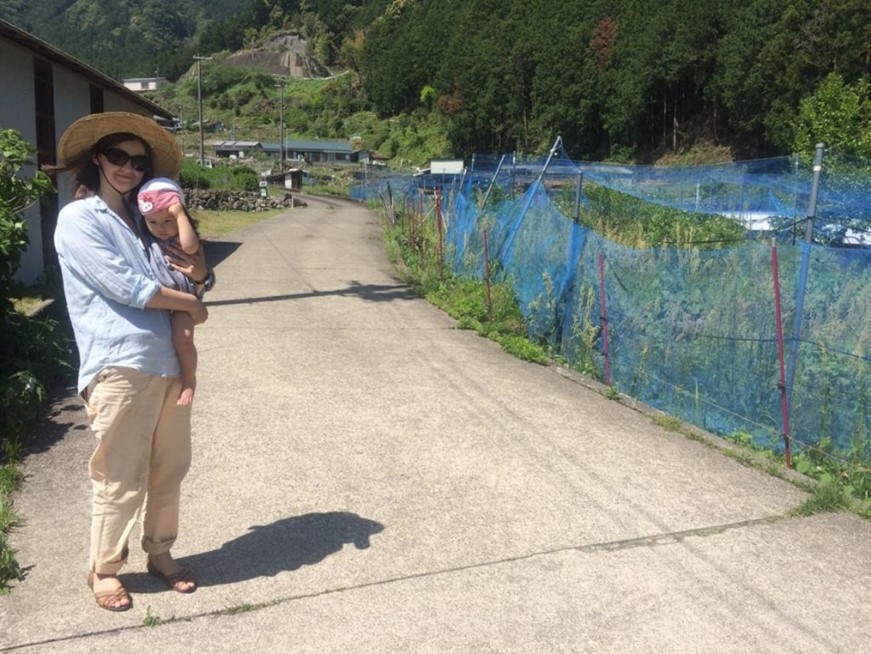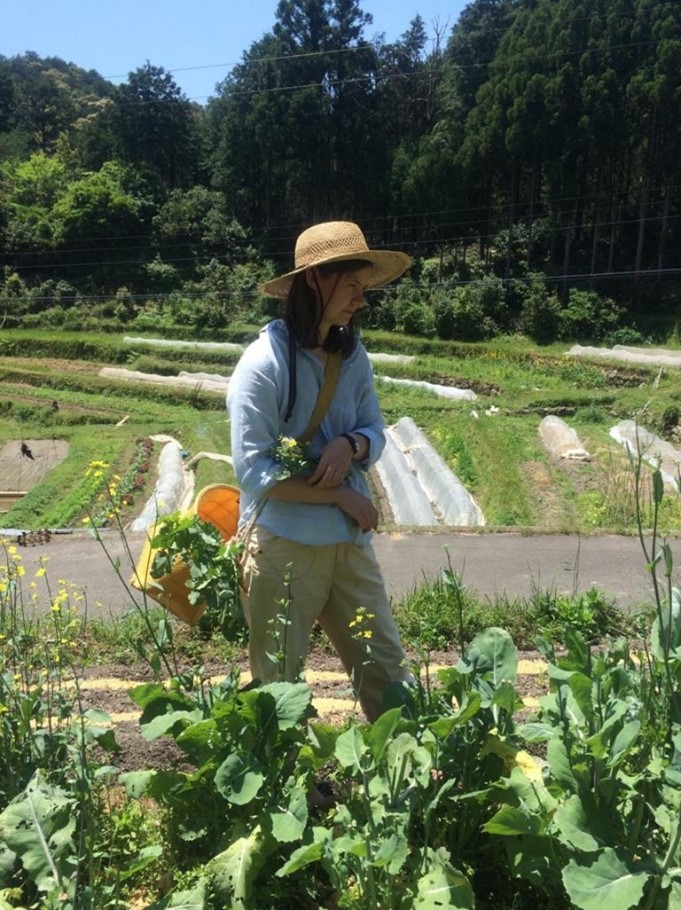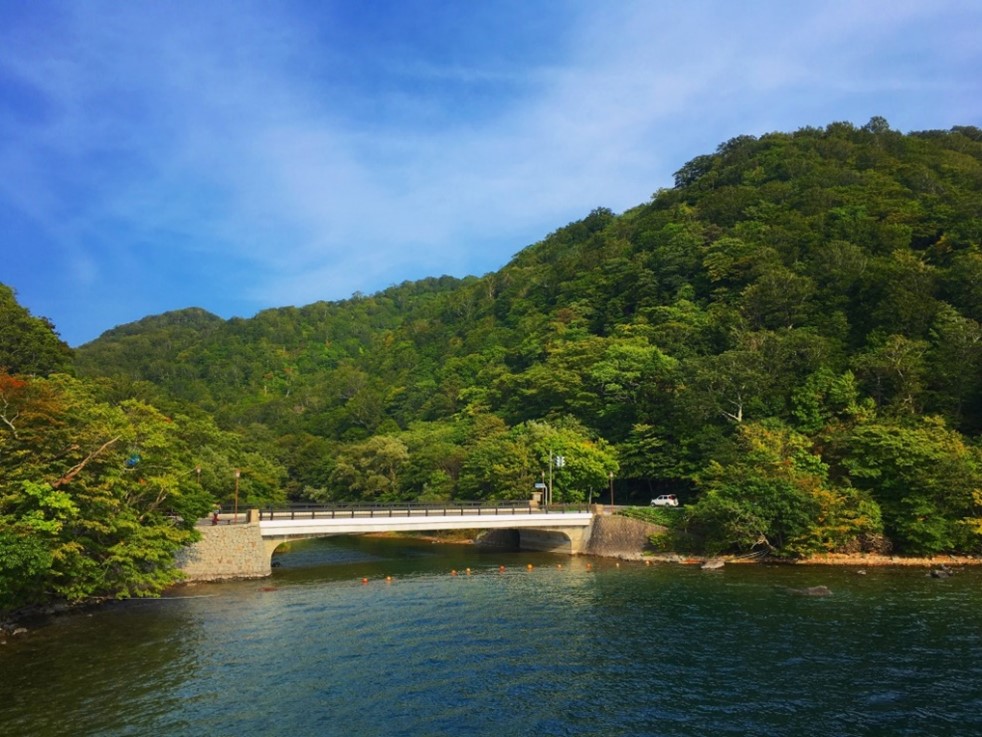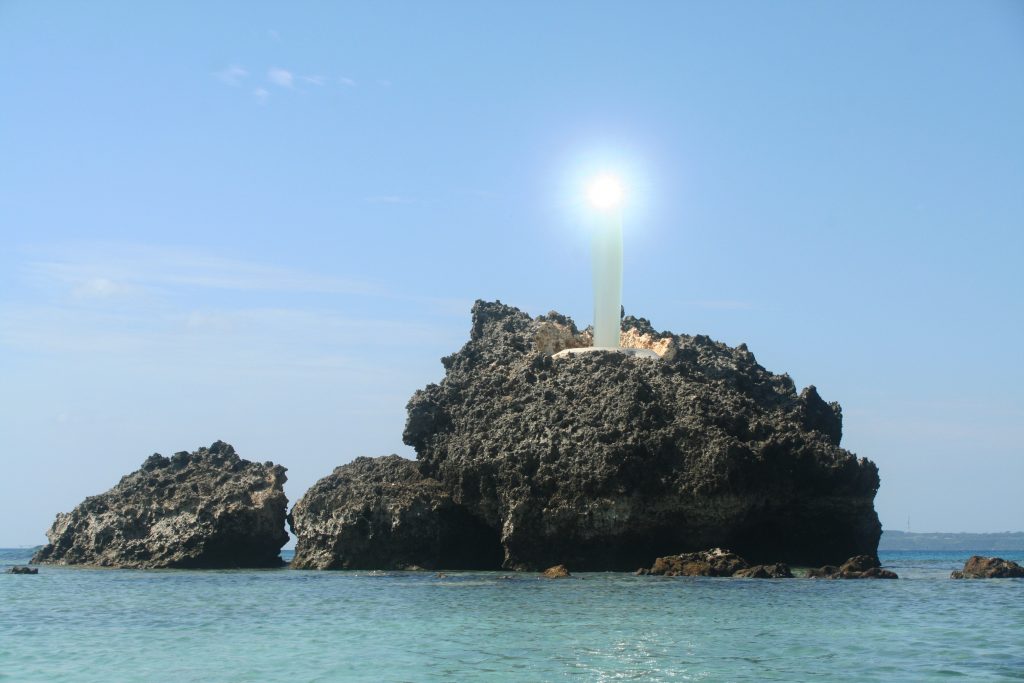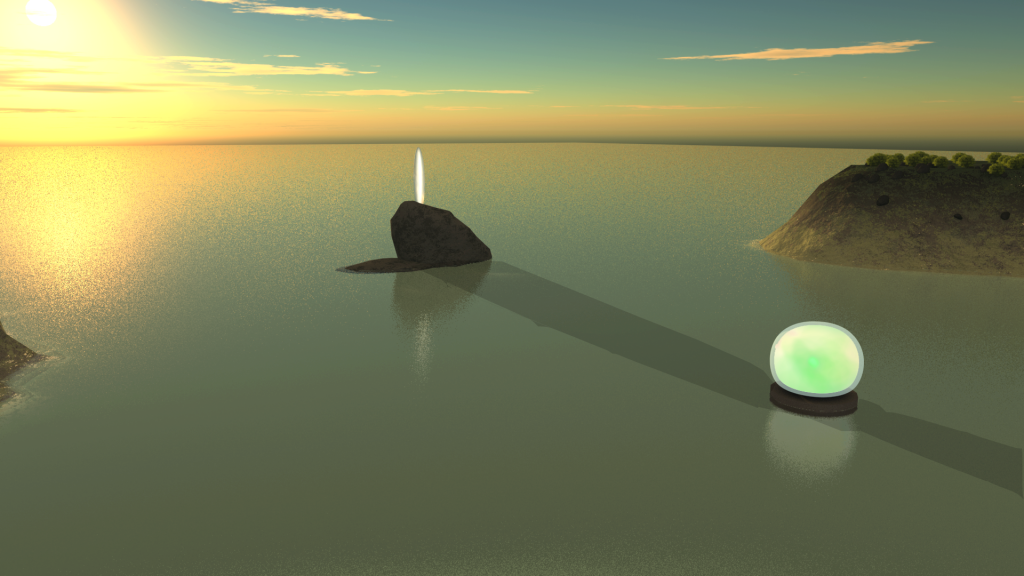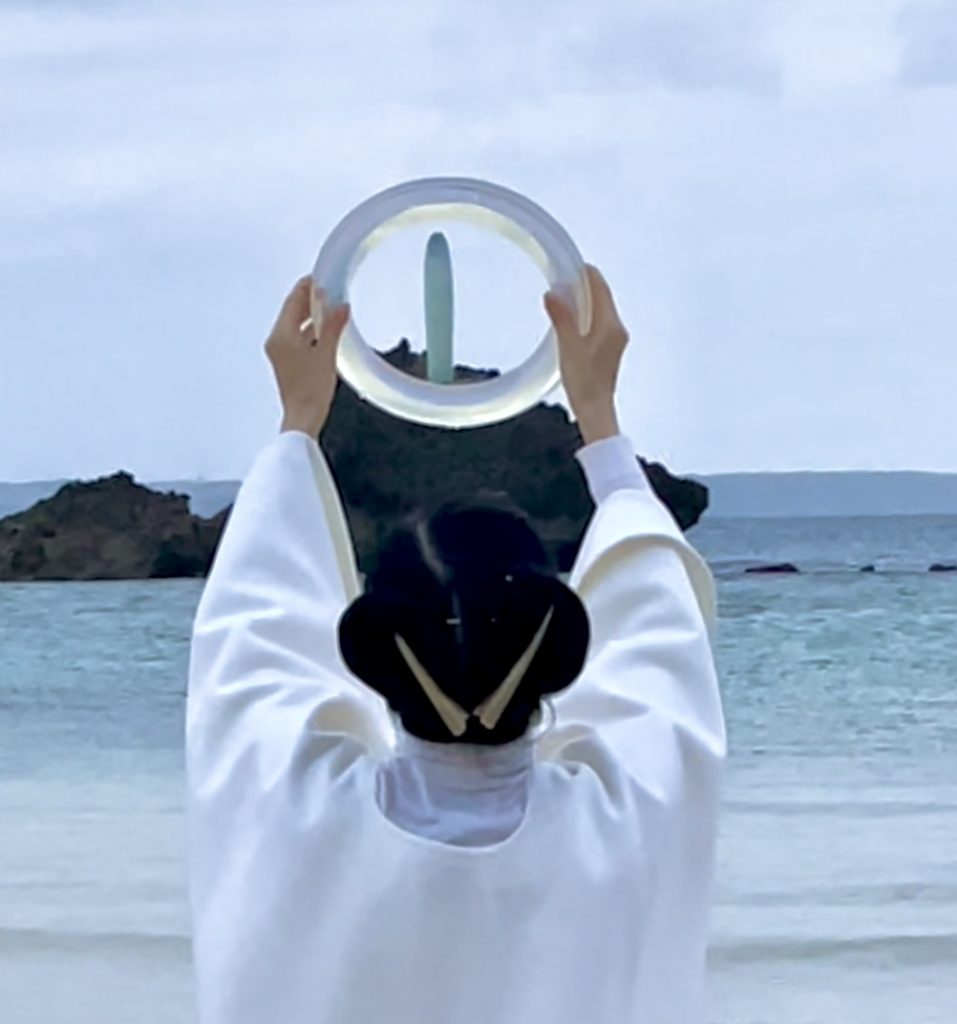文:堀田貴子*
英語訳:ケミク・フルカン*
by Takako Horita* (translated from Japanese by Furkan Kemik*)
今年は梅雨入りが早かったので心配しましたが、今のところ梅雨の晴れ間が多く、災害を心配するほどの雨は降っていません。それで、くじゅう連山のふもとに住む私は、6月の休日を利用して、自生するミヤマキリシマを追いかけて登山を満喫しました。ミヤマキリシマが満開になると、ピンクのじゅうたんに覆われたような山の上のお花畑はうっとりするほど美しく、多くの登山客でにぎわいます。
I was worried about the early start of the rainy season this year. But so far, we mostly had clear weather. There was not too much rain and so we didn’t need to worry about natural disasters. This is why I used my day off in June to go climbing to see the native Kyūshū azaleas (miyama kirishima) at the nearby Mount Kujū. When the Kyūshū azaleas are in full bloom, the fields of flowers on the mountain look like a pink carpet. They are stunningly beautiful and crowded with climbers.
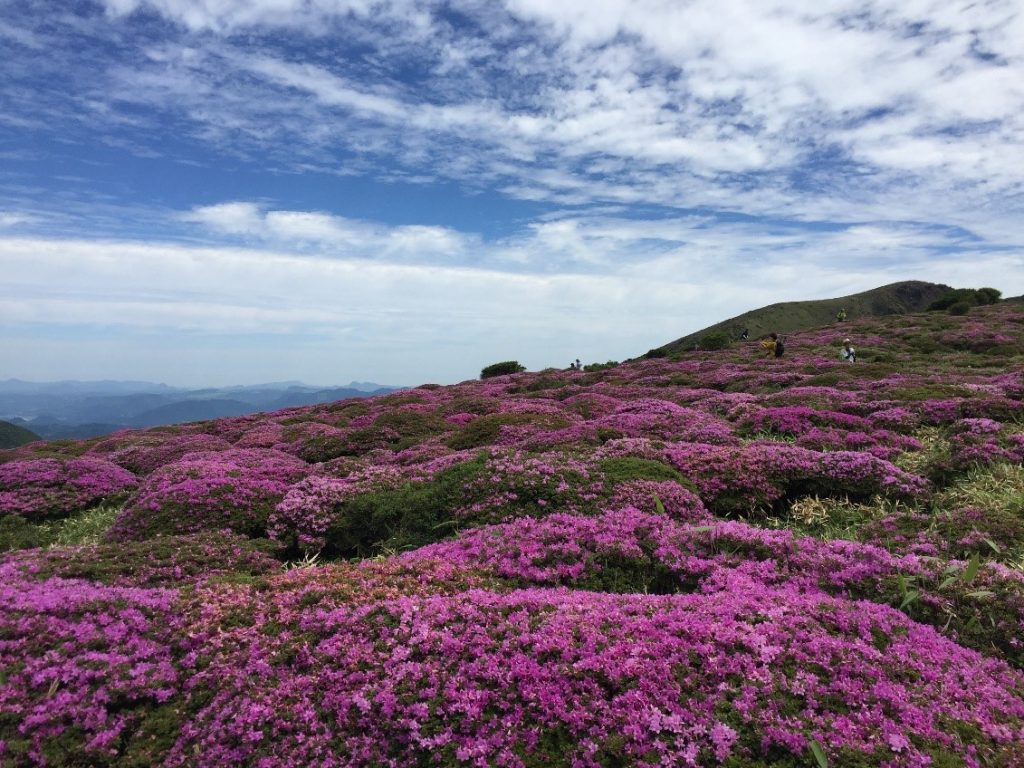
Kyūshū azalea (miyama kirishima) in full bloom in the Kujū mountains
©2021堀田貴子 (Takako Horita)
さて、昨年から新型コロナ感染症拡大予防のため、多くのイベントや集会、会議等が中止や延期を余儀なくされました。また、移動の自粛により観光客も減り、飲食店に出された時短要請などにより、町中はひっそりと静まり返ってしまいました。
Since last year, many events, meetings and conferences in Taketa had to be cancelled or were postponed to prevent the spread of the corona virus. In addition, due to the voluntary travel restrictions the number of tourists has decreased and because of the reduced opening hours of restaurants, our city fell completely silent.
昨年はコロナ対策でマスクを配布したり、様々な対策を講じたりで忙しかった担当課(保険健康課)は今年度に入ってからはワクチン接種に向けて、医師会との調整等準備をしてきましたが、4月末からは高齢者の予約対応、集団接種実施など着実に進めております。6月24日現在、75歳以上の87%、65歳-74歳の84%の方の予約を終え、7月末までに高齢者の9割の方にワクチン接種をしていただくことができます。今は40歳以上の方や18歳の方の予約も始まり、多くの方に安心して生活 いただけるようになるまでそう遠くはありません。
The local government’s division in charge of measures against the Covid-19 pandemic (Insurance and Health Division) has been busy with distributing masks and various other measures since last year. From the beginning of this year, they have been preparing for vaccinations by coordinating with the medical association. Since the end of April, they have made appointments for vaccinations of the elderly and carried out group vaccinations. By June 24, 87% of those aged 75 and older and 84% of people aged 65-74 have set up appointments and 90% of them will get vaccinated until the end of July. We are now starting to book appointments for people aged 40 and older and for 18-year-olds. So, it won’t be long until many people can live safely again.
今はマスクをはじめ感染症対策をとりながら、日常生活はもちろん会議をしたりしていますが、これからの暑い時期にはマスク生活はつらいものです。みんながマスクなしで自由におしゃべりやお食事したり、旅行したりできる日々を心待ちにしています。
At the moment, we are using masks as the most important measure to protect ourselves from the infectious diseases in our everyday-life while we hold meetings for example, but in the hot months ahead it will be hard to live a life with masks. I am looking forward to the days when we can all talk, eat and travel freely without masks.
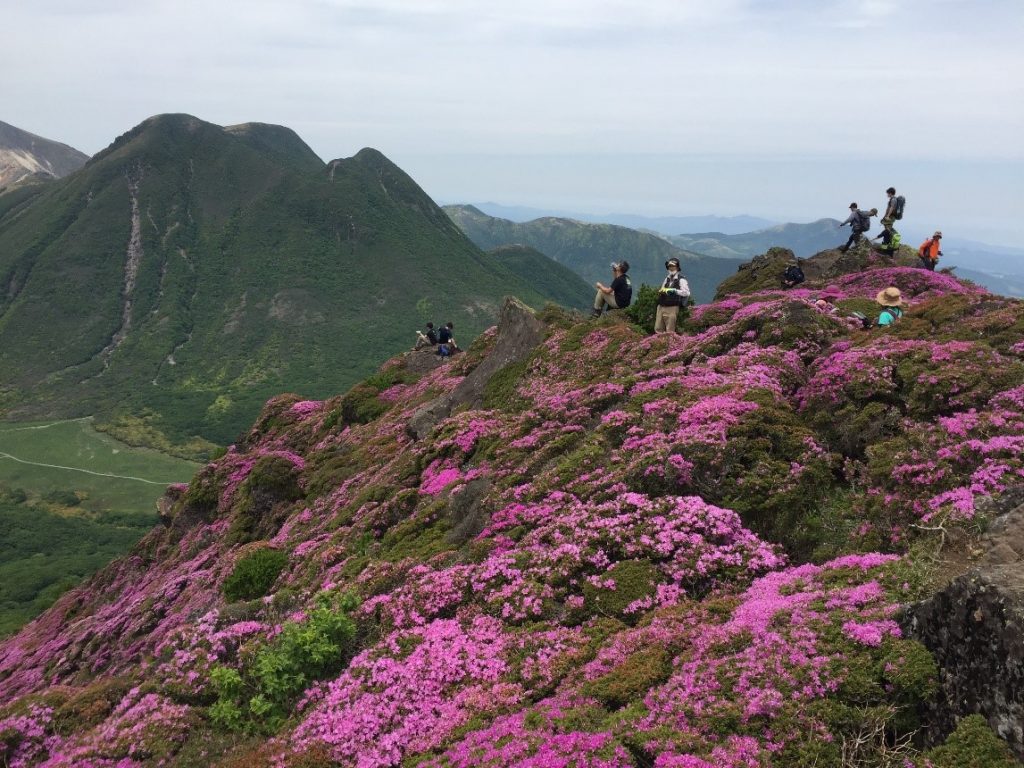
Climbers enjoying the view of the Kyūshū azalea in the Kujū mountains
©2021堀田貴子 (Takako Horita)
それは学校の子どもたちも同じです。子どもたちにはまだワクチン接種を進めていませんが、学校では子どもたちにタブレットが配られ、世界において遅れていたICT化を進めていて、リモート授業も可能になる予定です。学校の給食もしばらく提供できない時期もありましたが、今は普通に提供されています。ただ、食べるときは黙食といって、おしゃべりをせずに、同じ方向を向いて食べています。早く楽しくおしゃべりしながら給食が食べられる日々を楽しみにしています。
This is particularly true for schoolchildren. We have not yet started to vaccinate children, but we have given tablet computers to children in the schools to make progress with Information and Communication Technology (ICT-ka), an area where we are very much behind the rest of the world, to enable remote learning. We couldn’t even provide school lunches for a while, but it is now being served again as usual. However, when the kids eat, they have to eat in silence without talking and looking into the same direction. I am looking forward to the day when children can eat school lunches again while chatting happily.
*堀田貴子は大分県竹田市市役所で栄養士として働いています。長年食育担当として、健康づくりや、郷土料理の伝承等を通して竹田市の食の魅力を探り発信してきましたが、昨年からは医療連携による生活習慣病重症化予防や高齢者のフレイル予防等を担当しています。
*ケミク・フルカンはベルリン自由大学の日本学科の学生スタッフです。
*Takako Horita is a nutritionist working at the municipal hall of Taketa-shi in Ōita prefecture. For many years, she has been responsible for food education (shokuiku), health promotion and for disseminating the charm of Taketa’s food and local food traditions. Since last year, she is coordinating medical services to prevent lifestyle diseases and frailty in elderly people.
*Furkan Kemik is a student assistant at the Institute of Japanese Studies at Freie Universität Berlin.

